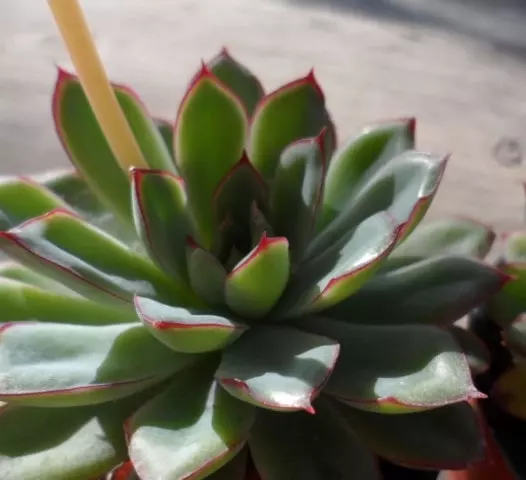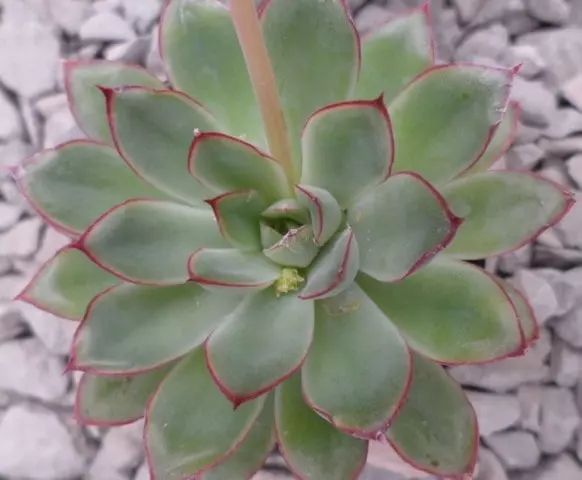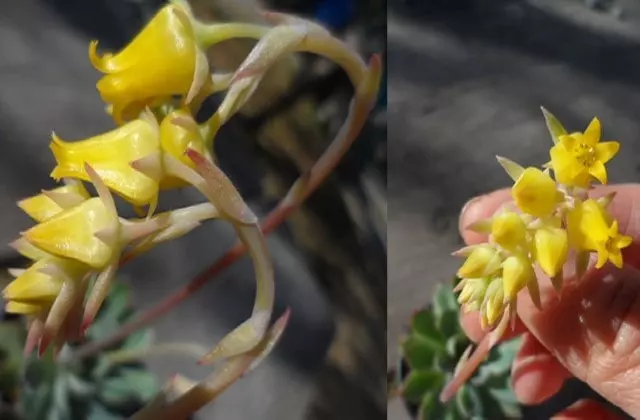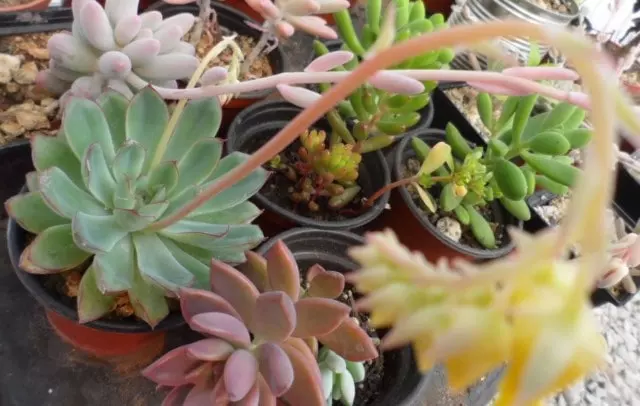For people who love plants it is fascinating to see how each of them has characteristics that make them unique and special, and for succulents is no exception, these plants can surprise us by the diversity that is in them. Learn all about Echeveria pulidonis care in this article.
Some are very large like the Echeveria pallida, some others are very small and compact, their flowering colors are very varied and showy, as well as the shape of their stems and leaves, but today we want to dedicate this article to a very beautiful plant that belongs to the genus of echeverias and is known as Echeveria pulidonis.
I tell you that the echeveria genus has approximately 154 species and about 130 exist in Mexico, so you may have already realized how many echeverias are missing in your collection, so to move forward on this path we will know everything you need to know about today’s protagonist: the Echeveria pulidonis.
Table of Contents
Characteristics of Echeveria pulidonis
This beautiful succulent is native to Mexico, specifically the state of Jalisco, and belongs to the Crassulaceae family.
The Echeveria pulidonis is an ornamental plant highly prized for its beauty, you have to know that this succulent is slow-growing, so do not despair if in a certain time you do not see much progress because it is an echeveria that will test your patience, but believe me it will be worth it.
Its leaves form rosettes, it does not develop a stem, that is, we will always see its rosettes very close to the substrate, the leaves of the Echeveria pulidonis are fleshy, slightly concave of a beautiful pale blue-green color and reddish edges. In adult plants, the rosette can measure up to 5” (12 cm) in diameter.
Like most of the echeverias, this plant does not require complicated care to have it healthy and beautiful, so it is excellent if you want to start with it your collection of echeverias or as a gift is an excellent choice, and of course as always here we share their care.
- 🌱 {Amazing succulent}: Echeveria Pulidonis is a slow growing succulent with stemless rosettes, and with a distinct red tip.
- 🌱 {Features}: You’ll receive ONE potted Echeveria Pulidonis in 2” plant pot.
- 🌱 {Easy to grow}: It is easy to grow, but as with all succulents, never over-watering, never let your Echeveria sit in water.
Echeveria pulidonis Care:
Light:
For our Echeveria pulidonis to retain its compact rosette shape and the reddish outline of its leaves I recommend that you place it in a place where it receives very good lighting, it can tolerate direct morning sun exposure without a problem.
In adult and mature specimens, with proper adaptation, it can withstand direct sun all day long, but if your Echeveria pulidonis is still very young it should receive only a few hours of the morning sun, thus avoiding burns on its leaves.
Echeveria Pulidonis Care – Watering:
The watering that we will give to our Echeveria pulidonis is the standard, you have to water it when the substrate is dry and that it is a deep watering, that is to say until we see that the water comes out of the drainage holes of its pot.
As most of the Echeverias our pulidonis do not need very constant watering, so before watering again it is necessary to verify that its substrate is completely dry, if in the area where you live the temperatures are very high (especially in summer) possibly you will have to water them more frequently.
Once the autumn season arrives, watering should be reduced little by little, and in winter you should avoid watering it since in that period it is very vulnerable to rotting.

Temperature:
Echeveria pulidonis is a little plant that does not withstand frost or cold winters at all, so if where you live the temperature reaches below 50 °F (10°C) it is best to shelter it indoors.
It favors a warm climate above 59 °F (15°C).
Echeveria Pulidonis Care – Substrate:
For this echeveria I recommend that you place a substrate that does not puddle, that is to say, that it drains very well. In this type of echeveria, I have used a substrate 70% mineral and 30% organic and it has given me very good results with it.
If you want to take proper care of your Echeveria pulidonis and do not want to prepare the substrate, we recommend this one (Order it here).

Fertilization:
If it has little time that you made the change of substrate of this succulent it is not necessary to fertilize it, however, if your Echeveria pulidonis is going to be one year old in that same substrate I recommend you to fertilize it organically, you can place ground eggshells in its substrate, and you can also water it with rice water or banana peel tea once or twice a month.
Remember that this echeveria is especially slow-growing, so, even if you fertilize it this will not accelerate the process and on the contrary, we can weaken or deform the plant.
How to Propagate Echeveria pulidonis
There are two very simple ways to propagate or reproduce our Echeverias pulidonis.
Propagation by Leaf:
To propagate our Echeveria pulidonis by leaf just choose and separate the suitable leaves of our echeveria, let them heal, and then place them on a layer of substrate, they will gradually develop a new rosette with roots giving way to the birth of a new seedling.
Propagation by Tillers:
Another of the simplest ways to propagate this succulent is through the separation of the “children” this one, our Echeveria pulidonis when it already has certain maturity will grow small rosettes in the part of the base around the main rosette if we want to have several pulidonis we only have to wait until these new rosettes have a third of the size of the main rosette and proceed to separate them from the mother plant and plant them in their new pot.
Remember that the propagation of our succulents is best done in the period from spring to summer.
Flowering:
Although the flowers of Echeveria pulidonis are modest they are very pretty, it blooms in late winter and early spring, its flowers emerge in clusters at the end of a long reddish-colored flower stalk, these flowers are bell-shaped and very bright yellow.

Common Problems with Echeveria pulidonis:
One of the best characteristics of the Echeveria pulidonis is that it is not at all delicate and it is very difficult for it to get sick or plague.
What you do have to take care of is to provide adequate maintenance which will consist of occasionally removing all the dry leaves that remain around the base of the rosette to prevent pests from lodging there, we will also remove the flower stalks once they are dry.
And finally, so that your Echeveria pulidonis is healthy and not prone to get sick, take care not to water it excessively, that its pot has adequate drainage, and not to expose it to low temperatures.
I hope that now you like this echeveria as much as I do and very soon it will be part of your garden.
We hope this article on how to care for Echeveria pulidonis will be helpful. We recommend ours about Kalanchoe tomentosa care.


